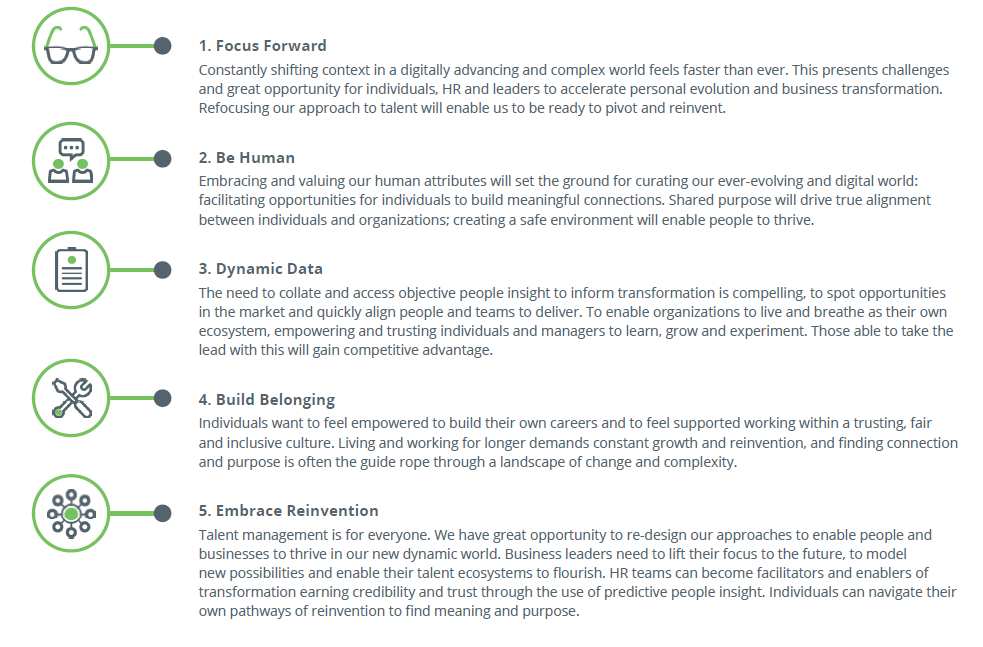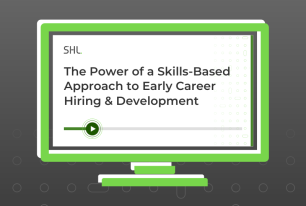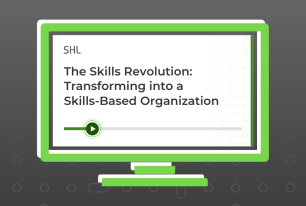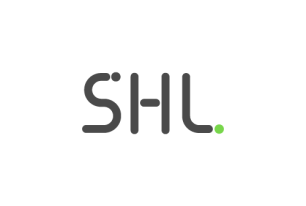People and Organizations v.20.20: Updating Talent Management
Do not delay upgrading your people and organization’s “Operating System” as the way we work fundamentally changes.
Share
That familiar message – ‘new software is available and ready to install’ – always seems to appear at the most inconvenient moment. If you are anything like me, then you wait to hit that install button until there is no other option – for example – you no longer can access files being shared, the system is operating slowly, or bugs are appearing so frequently it impedes day to day experiences.
There are many parallels here with people and organizations. How often do we fail to address the software (the culture, the way we work, our organizational capabilities) until the challenges and toxicities appear? Great performers choosing to leave the business, customers deciding not to renew their contracts, employees struggling with their well-being.
Operating System Upgrade
Technology providers update their Operating Systems (OS) quite frequently – often once or twice a year. This is interspersed with patches to help fix bugs. A whole OS upgrade is triggered either when the risks become too great and the patches aren’t enough, or the provider identifies an opportunity to enhance features and functionality to achieve competitive advantage.
Historically, organizations have followed a 3 to 5-year plan, with annual patches to manage changes in the market or to tackle internal issues — i.e. organizational re-structure, a new competency framework, or the introduction of a new channel to market. A full upgrade – new mission, purpose, significant changes to organizational design, new customer and employee value propositions – is very time consuming and expensive, and is typically reserved for significant points of transition — The buildup to a merger or acquisition; integration of a new company; or transformation of the brand and identity to revitalize market-position.
But our horizons have changed.
Historically, organizations have followed a 3 to 5-year plan, with annual patches to manage changes in the market or to tackle internal issues.
Bug Fixing
Today, organizations are facing a flurry of issues and disruption with new frequency and force, rapidly re-shaping how we work:
- Decentralized organizations – Companies have already become increasingly flatter in structure and more agile, and the pandemic has exposed the necessity of a flexible and remote workforce. Consequently, most organizations are becoming increasingly decentralized, creating a new urgency to build connection and belonging in a virtual and matrix world.
- Operating within a broader ecosystem – Recent experiences have magnified the role of organizations as part of a broader ecosystem. No longer operating as standalone entities, but connected with communities, networks, other businesses to serve a broader purpose within the societies within which we live and work. ‘Human-first’ leadership and culture being prioritized over financial performance alone.
- Empowering people – For people, there is change too — as demonstrating individual value within the ecosystem becomes a key imperative. Where we previously talked about employees and jobs, we are now referencing people, tasks, and skills. Many companies are looking for ways to empower their people through talent marketplaces. HR and Leaders are broadening views of ‘talent’ to include everyone. Finding ways to democratize learning and development, because people have the power to re-skill and reinvent as the world evolves.
- To deliver value for multiple stakeholders – HR and people initiatives are now (at last) important to everyone! The value proposition needs to include more than leaders, investors, and customers to clearly drive transformation. Moving towards an employee-centric approach to the experience of work is a goal shared by HR and Business Leaders (as workforces truly become an organization’s greatest asset) and job applicants place greater emphasis on an organization’s culture and commitment to their community when evaluating job offers.
People & Organizations v20.20
These fundamental shifts require more than a series of bug-fixing patches to enable genuine transformation.

Future Upgrades
A new Operating System for People and Organizations will take time, thought and experimentation to get right and fully embed. And the journey does not stop there, a roadmap of future upgrades is likely to include:
- New roles such as Chief Purpose Planner, Human Bias Officer, Director of Well-being, and Human Network Analyst
Considerable advances (and learnings) through people data applications and HCM software (especially as organizations build their own talent ecosystems) - Cultural transformation from a focus on historical performance to future learning, growth, and psychological safety, encouraging creativity and collaboration
- Emphasis on partnerships and alliances between companies to facilitate learning and collaboration through extended marketplaces
- And perhaps a new name for Talent Management?
Download our latest thinking on the future of Talent Management and start your People & Organization Operating System upgrade today.









